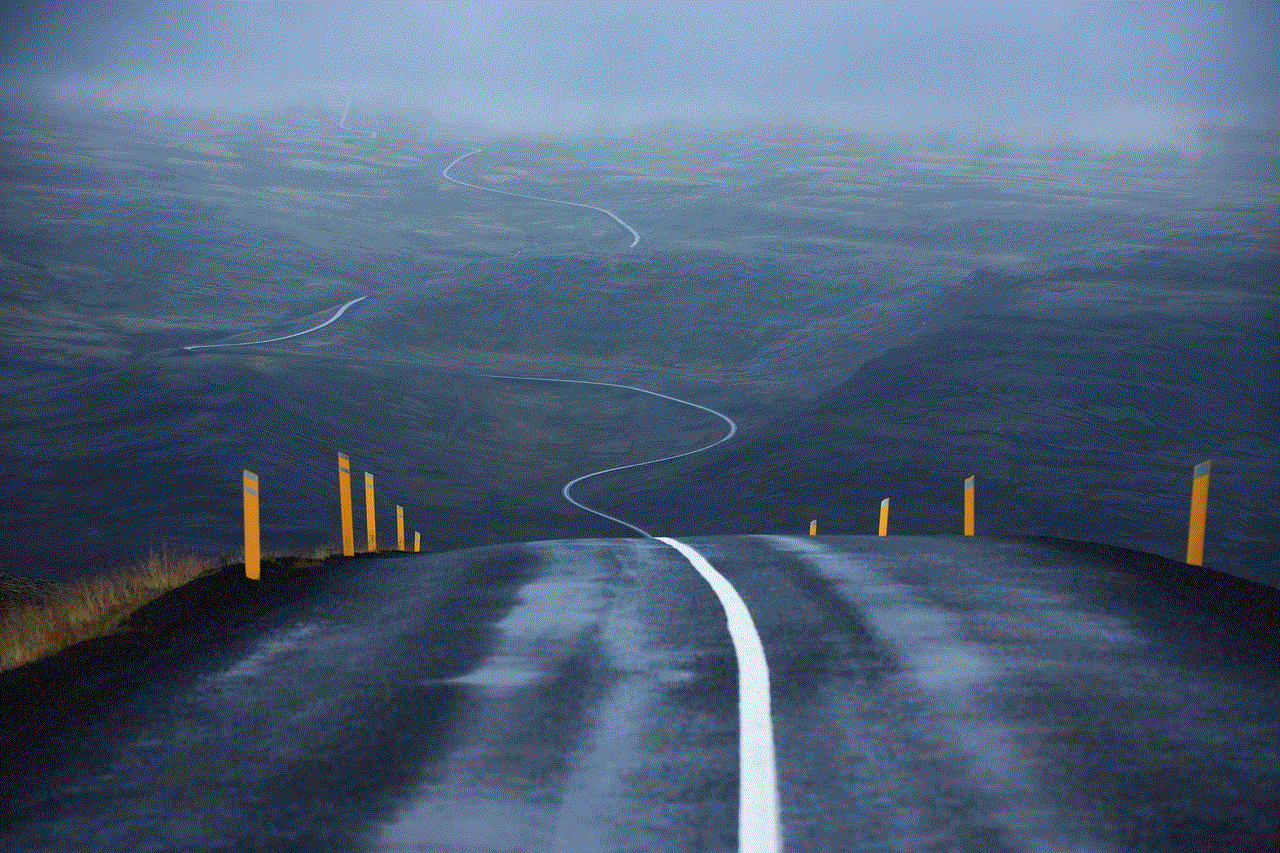make celebrities say anything
Celebrities have always been a source of fascination and intrigue for the public. Their glamorous lifestyles, high-profile relationships, and talent have captivated the world for decades. From Hollywood stars to music icons, we can’t seem to get enough of them. But what if we could make celebrities say anything? With the rise of deepfake technology, this may soon become a reality.
Deepfakes are videos or images that have been manipulated using artificial intelligence to make it appear as though someone is saying or doing something they never actually did. This technology has primarily been used for comedic purposes, such as making politicians sing or dance. However, it has also raised concerns about its potential misuse, especially in the entertainment industry.
One of the main concerns with deepfakes is their potential to spread misinformation and harm someone’s reputation. With the ability to make anyone say anything, it becomes challenging to distinguish between what is real and what is fake. This has implications for celebrities who are constantly in the public eye and vulnerable to false or damaging information being spread about them.
Imagine if a deepfake video of a celebrity making racist or offensive remarks went viral. Even if the video was proven to be fake, the damage to the celebrity’s reputation and career could be irreversible. In an industry where image is everything, the threat of deepfakes looms large.
But it’s not just the potential for fabricated videos that is concerning. Deepfakes also raise questions about consent and privacy. With the technology becoming more sophisticated, it may become challenging to tell the difference between a real and fake video. This could lead to instances where celebrities are portrayed in compromising or intimate situations without their consent.
For example, in 2017, a deepfake video of actress Gal Gadot, known for her role as Wonder Woman, surfaced online. The video showed her engaged in a sexual act, but it was later revealed to be a deepfake. This incident sparked a conversation about the ethical implications of this technology and the need for stricter regulations.
Another issue with deepfakes is the impact they may have on the entertainment industry. With the ability to make anyone say anything, the authenticity and integrity of films, TV shows, and music may be called into question. It may also lead to a decline in trust and credibility among audiences, which could have severe consequences for the industry.
On the other hand, some argue that deepfakes could be a valuable tool for actors and filmmakers. With the technology, actors could potentially play characters that are physically impossible for them. For example, a short actor could play a tall character, or a young actor could play an older version of themselves. This could open up a whole new world of possibilities for storytelling in the entertainment industry.
Additionally, deepfakes could also be used to preserve the legacy of deceased celebrities. For example, a deepfake of Audrey Hepburn could be created to star in a new film, using her likeness and voice. This could allow future generations to experience and appreciate the work of iconic celebrities who are no longer with us.
However, the use of deepfakes in the entertainment industry also raises concerns about the future of acting. If anyone can be made to say or do anything, what does that mean for the craft of acting? Will there still be a need for talented actors, or will deepfakes take over?
Moreover, the rise of deepfakes also brings up ethical questions about the responsibility of the creators and users of this technology. Should there be stricter regulations in place to prevent the misuse of deepfakes? Who is accountable if a deepfake causes harm or damage to someone’s reputation? These are complex issues that will need to be addressed as the technology continues to advance.
In conclusion, the ability to make celebrities say anything through deepfakes has the potential to revolutionize the entertainment industry. It could open up new opportunities for storytelling and preserve the legacy of iconic celebrities. However, it also raises significant ethical concerns and threatens the authenticity and integrity of the industry. As technology continues to evolve, it is crucial to have open and honest discussions about the implications of deepfakes and how to regulate their use. Only then can we navigate this new digital landscape responsibly.
find my iphone app for android
Smartphones have become an integral part of our daily lives, and the need to protect them has become more important than ever. One of the biggest fears of smartphone users is losing their device or having it stolen. The thought of losing all your personal data, contacts, and photos can be terrifying. Thankfully, technology has advanced to help us locate our lost or stolen phones. The “Find My iPhone” app, developed by Apple, has been a lifesaver for many iPhone users. But what about Android users? Is there a similar app available for them? In this article, we will explore the options available for Android users to find their lost or stolen phones.
Firstly, let’s understand what the “Find My iPhone” app does for iPhone users. This app is a built-in feature of Apple’s iOS operating system, and it allows users to track the location of their lost or stolen iPhone using another Apple device or through iCloud.com. Not only can you see the current location of your device, but you can also remotely play a sound on your phone to help you find it if it’s nearby. In case your phone is not within your reach, you can remotely lock it or erase all the data on it to prevent any unauthorized access. This app has been a game-changer for iPhone users, and it’s no wonder that Android users are also looking for a similar app to protect their devices.



Google, the parent company of Android, has also developed a solution for finding lost or stolen Android phones. The app, called “Find My Device,” is available for free on the Google Play Store. Just like the “Find My iPhone” app, it allows you to remotely locate, lock, and erase your device. However, there are a few key differences between the two apps. While the “Find My iPhone” app is a built-in feature of iOS, the “Find My Device” app needs to be downloaded and installed by the user. This means that not all Android users may have this app on their devices. Additionally, the “Find My Device” app is not as comprehensive as the “Find My iPhone” app. It lacks some features like playing a sound on your phone or displaying a custom message on the lock screen .
If you are an Android user and do not have the “Find My Device” app, don’t worry. There are several third-party apps available on the Google Play Store that offer similar services. One such app is “Find My Phone” by Family Safety Production. This app allows you to locate your lost or stolen phone, remotely lock it, and erase all the data on it. It also has a feature to take a photo with the front camera when someone enters the wrong passcode on your phone, giving you a glimpse of the person who may have your device. Another popular app is “Prey Anti Theft” by Prey Inc. It not only allows you to track your phone’s location but also has a “Missing Mode” feature that activates when your phone is offline. This feature collects all the necessary information to help you locate your device when it comes back online.
Apart from these apps, there are also some security apps that offer phone tracking as one of their features. For example, “Avast Antivirus – Mobile Security & Virus Cleaner” by Avast Software has a “Track Phone” feature that allows you to locate your device on a map and also activate an alarm. Similarly, “CM Security Master – Antivirus, VPN, AppLock, Booster” by Cheetah Mobile has a “Find Phone” feature that helps you locate your device on a map and also remotely lock it or wipe all the data on it.
In addition to these apps, there are also some unique solutions for finding lost or stolen Android phones. One such solution is “Cerberus Anti Theft” by LSDroid. It not only offers the usual features like tracking, locking, and wiping your device but also has some advanced features like taking photos with the front and rear cameras, recording audio, and even capturing screenshots. Another unique app is “Anti-theft alarm” by GOODEV. It has a “Motion Detection” feature that activates when someone moves your phone, triggering a loud alarm and also sending a notification to your registered email address.
Apart from these apps, there are also some hardware solutions available for Android users. One such solution is “TrackR” by TrackR Inc. It is a small, coin-sized tracking device that can be attached to your phone or any other valuable item. You can then use the TrackR app to locate the device, and it also has a “Crowd GPS” feature that uses the TrackR community to help you find your device even if it’s out of Bluetooth range. Another hardware solution is “Tile Mate” by Tile Inc. It is also a small, Bluetooth-enabled tracking device that can be attached to your keychain or phone. The Tile app helps you locate the device and also has a “Smart Alerts” feature that notifies you when you leave your device behind.
In addition to these apps and hardware solutions, there are also some precautionary measures that Android users can take to protect their devices. Firstly, make sure to always keep your phone locked with a strong passcode or pattern. This will prevent anyone from accessing your device if it’s lost or stolen. Secondly, make sure to regularly back up your data to a cloud storage service like Google Drive or Dropbox. This will ensure that even if your device is lost or stolen, you can still access your important data from another device. Lastly, make sure to enable the “Find My Device” feature on your phone or install a third-party tracking app. This will increase the chances of locating your device if it’s lost or stolen.
In conclusion, while there is no official “Find My iPhone” app available for Android users, there are several alternatives available that offer similar services. From third-party apps to hardware solutions, there are plenty of options for Android users to choose from. Additionally, taking some precautionary measures can also help in protecting your device. Losing your phone can be a stressful and sometimes scary experience, but with these apps and solutions, you can have some peace of mind knowing that your device can be located and recovered. So, make sure to take the necessary steps to protect your Android phone and always be prepared in case of any unfortunate incidents.
how to see blocked on snapchat
Snapchat , the popular social media platform known for its disappearing messages and fun filters, has become a favorite among teenagers and young adults. However, like any other social media platform, it also has its fair share of issues, one of which is getting blocked by someone. If you are wondering how to see if you have been blocked on Snapchat, here is everything you need to know.



First things first, let’s understand what it means to be blocked on Snapchat. When someone blocks you on Snapchat, it means that they have removed you from their list of contacts, and you will no longer be able to send them snaps or messages. Also, they will not be able to see your stories or your location on the app. In short, you will not be able to communicate with them through Snapchat anymore.
Now the question arises, how do you know if you have been blocked on Snapchat? Well, there are a few signs that can indicate if someone has blocked you on the app. The most obvious one is that you will not be able to see their snaps or stories anymore. Also, if you try to send them a message, it will not be delivered, and you will not receive any replies from them. Another sign is that you will not be able to see their Bitmoji on the app, and their name will not appear in your contact list.
Apart from these signs, there are a few other ways to determine if you have been blocked on Snapchat. One of them is by searching for the person’s username in the search bar. If their username does not appear in the search results, it could mean that they have blocked you. Another way is to check your chat history with that person. If their name appears in gray instead of blue, it could indicate that they have blocked you. However, it is important to note that these signs are not foolproof, and there could be other reasons for them to occur.
So, now that you know the signs of being blocked on Snapchat, the next question is, what should you do if you suspect that you have been blocked by someone? Well, the first thing you should do is to confirm your suspicion. You can do this by asking a mutual friend to check if they can see the person’s snaps or by creating a new account and searching for their username. If both of these methods confirm your suspicion, then it is safe to say that you have been blocked.
The next step is to understand why you have been blocked on Snapchat. There could be many reasons for someone to block you on the app. It could be because you have sent them inappropriate snaps or messages, or you have been constantly bothering them with your snaps. It could also be because they want to end the friendship or relationship with you. Whatever the reason may be, it is essential to respect their decision and not try to contact them through other means.
Now, you might be wondering, is there a way to unblock yourself on Snapchat? The short answer is no. If someone has blocked you on Snapchat, there is no way for you to unblock yourself or send them a friend request. The only way to reconnect with them is if they decide to unblock you or if you create a new account and add them as a friend. However, it is not advisable to create a new account just to add someone who has blocked you. It is best to respect their decision and move on.
If you have been blocked by someone on Snapchat, it is essential to handle the situation maturely. It is understandable to feel hurt or upset, but it is important not to retaliate or harass the person in any way. Remember, everyone has the right to decide who they want to communicate with, and if someone has decided to block you, it is best to respect their decision.
Now, let’s talk about the other side of the coin – what should you do if you have blocked someone on Snapchat? Well, first and foremost, it is crucial to have a valid reason for blocking someone. Blocking someone just because you do not like them or because they have a different opinion than you is not a good enough reason. However, if someone is constantly harassing you or sending you inappropriate snaps, then it is understandable to block them.



If you have blocked someone on Snapchat, it is important to remember that they will not be able to contact you through the app anymore. However, if they have your phone number or are friends with you on other social media platforms, they may try to contact you through those means. In such a situation, it is best to communicate your decision to them and ask them to respect it. If they continue to harass you, you can always report them to Snapchat or even involve the authorities if needed.
In conclusion, being blocked on Snapchat is not a pleasant experience for anyone, but it is important to handle the situation maturely. If you suspect that you have been blocked, confirm your suspicion and respect the other person’s decision. If you have blocked someone, make sure you have a valid reason and communicate your decision to them. And most importantly, always remember to use social media platforms responsibly and with respect towards others.